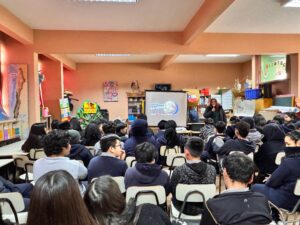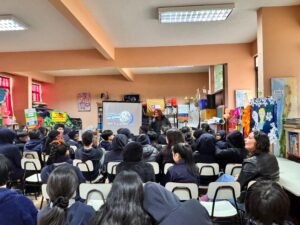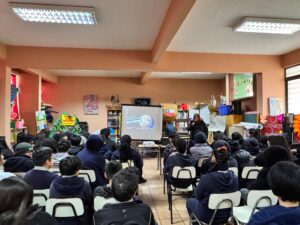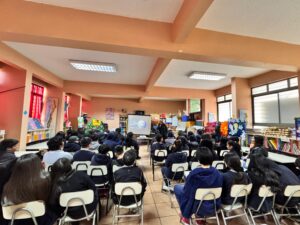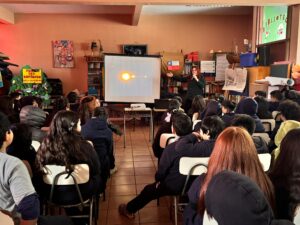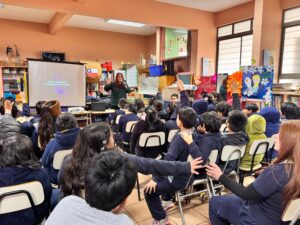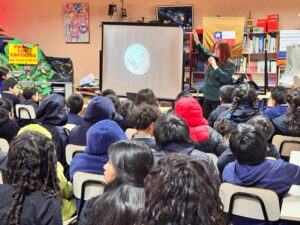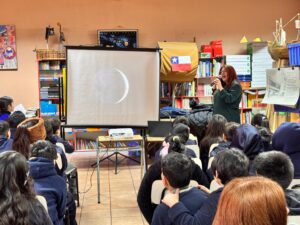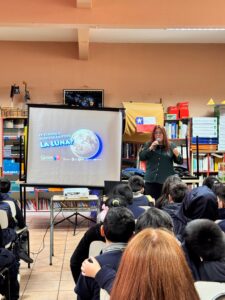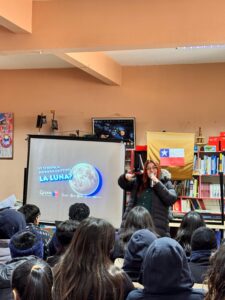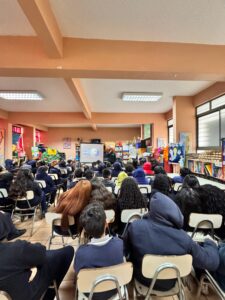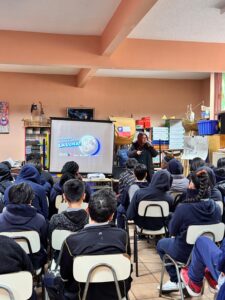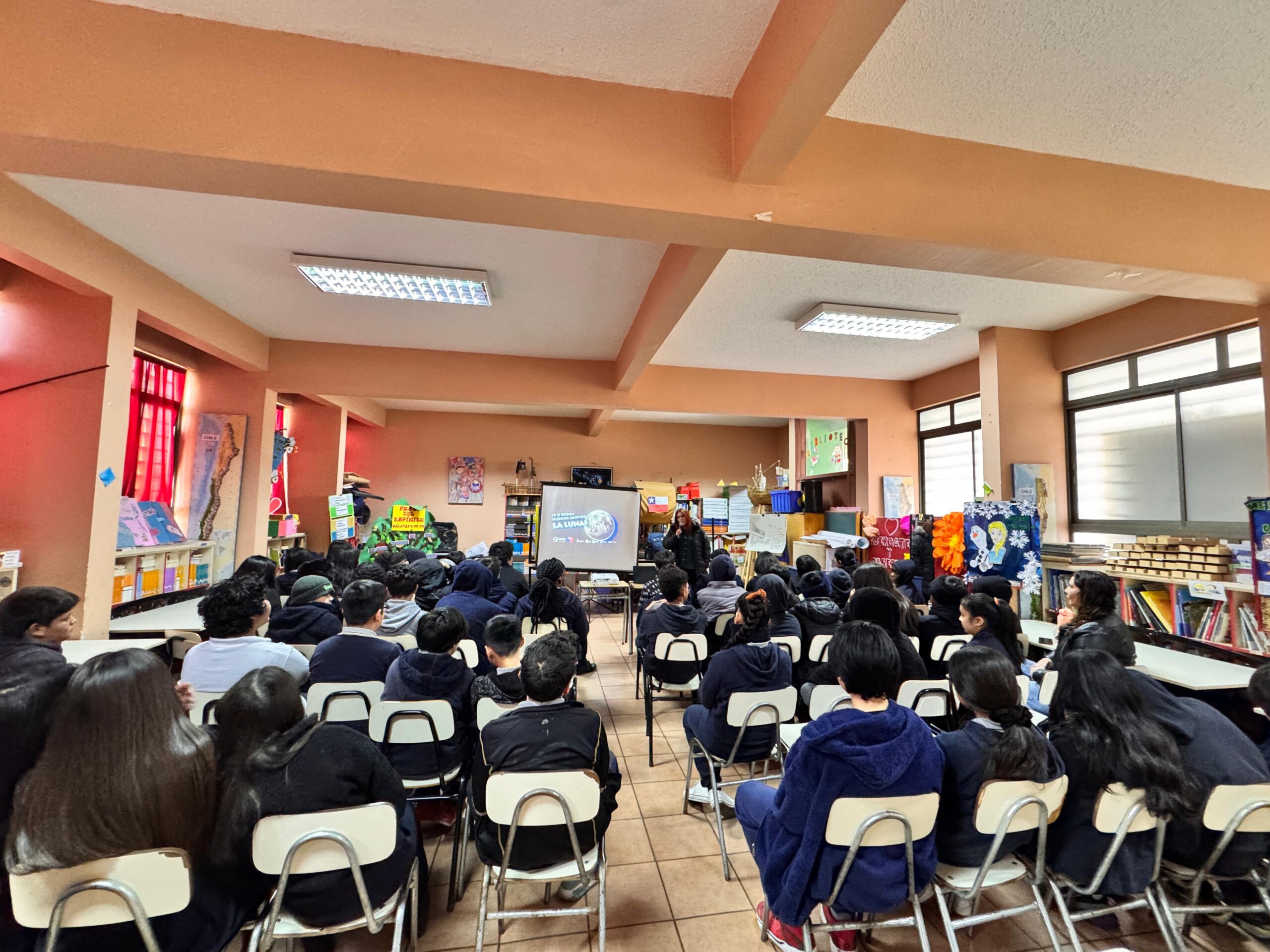
CATA brought astronomy closer to students in Pudahuel
Our Center presented a talk about the Moon to elementary school students at El Salitre School.
As part of its scientific outreach program, the Center for Astrophysics and Related Technologies (CATA) held a talk entitled “What if the Moon had never existed?” at El Salitre School, located in the municipality of Pudahuel. The activity was aimed at elementary school students in two groups: the first for third, fourth, and fifth graders; and the second for seventh and eighth graders, attracting a total of 136 participants.
Both presentations were given by Tracy Catalán, astronomer and CATA outreach scientist, who explained in an educational manner what Earth would be like if our natural satellite had never existed.
“The school chose this topic because it is covered throughout the basic education cycle and, furthermore, the Moon is an object that is present on some nights, but which is sometimes unfamiliar to us. The idea was for students to reflect on what would happen if it did not exist and how that would have affected the planet,” explained the astronomer.
The CATA representative also highlighted the motivation of the children, who actively participated during both days. “It was a very nice and enriching experience. The third- to fifth-grade students were very enthusiastic, asked many questions, and wanted to continue learning after the activity. In the case of the seventh- and eighth-grade students, they were interested in more complex topics, such as the seas, the difference between asteroids and meteorites, nebulae, and the formation of the solar system,” she said.
The event was also appreciated by the educational community. María Angélica Castro, a teacher at El Salitre School, highlighted the importance of these initiatives in student development: “It is essential that institutions such as CATA hold talks, workshops, or science fairs in schools because they bring science closer in a more direct way, spark curiosity, and encourage critical thinking. In addition, they contribute to the formation of informed and responsible citizens. The talks were very interesting and dynamic. The students participated actively throughout the activity and remained expectant and very interested in the subject,” said the teacher.
Through these types of activities, CATA seeks to continue bringing astronomy and science closer to children and young people, encouraging learning and scientific curiosity.
Recent news
-
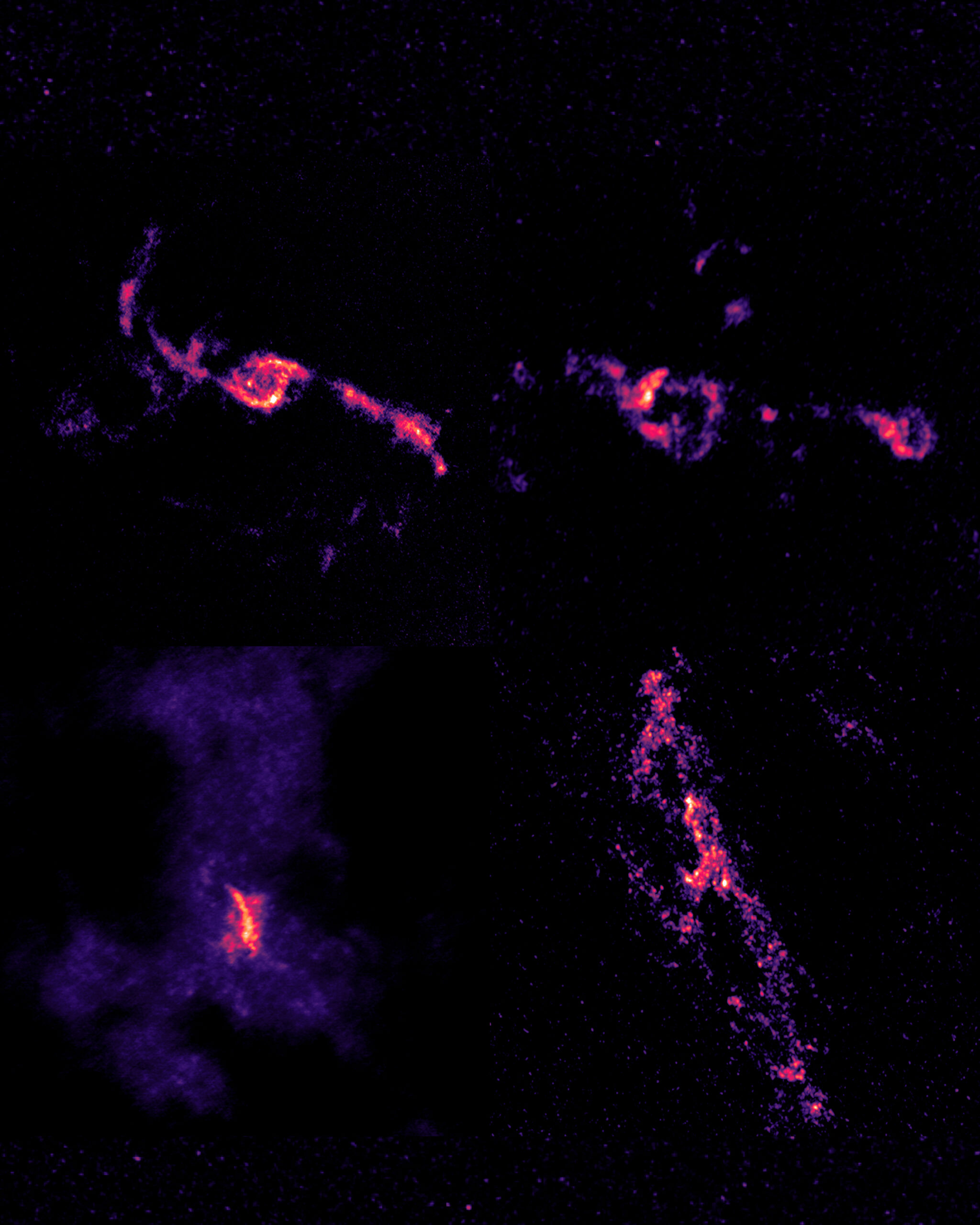 Publicado el: 22/12/2025International study reveals that black holes feed selectively
Publicado el: 22/12/2025International study reveals that black holes feed selectively -
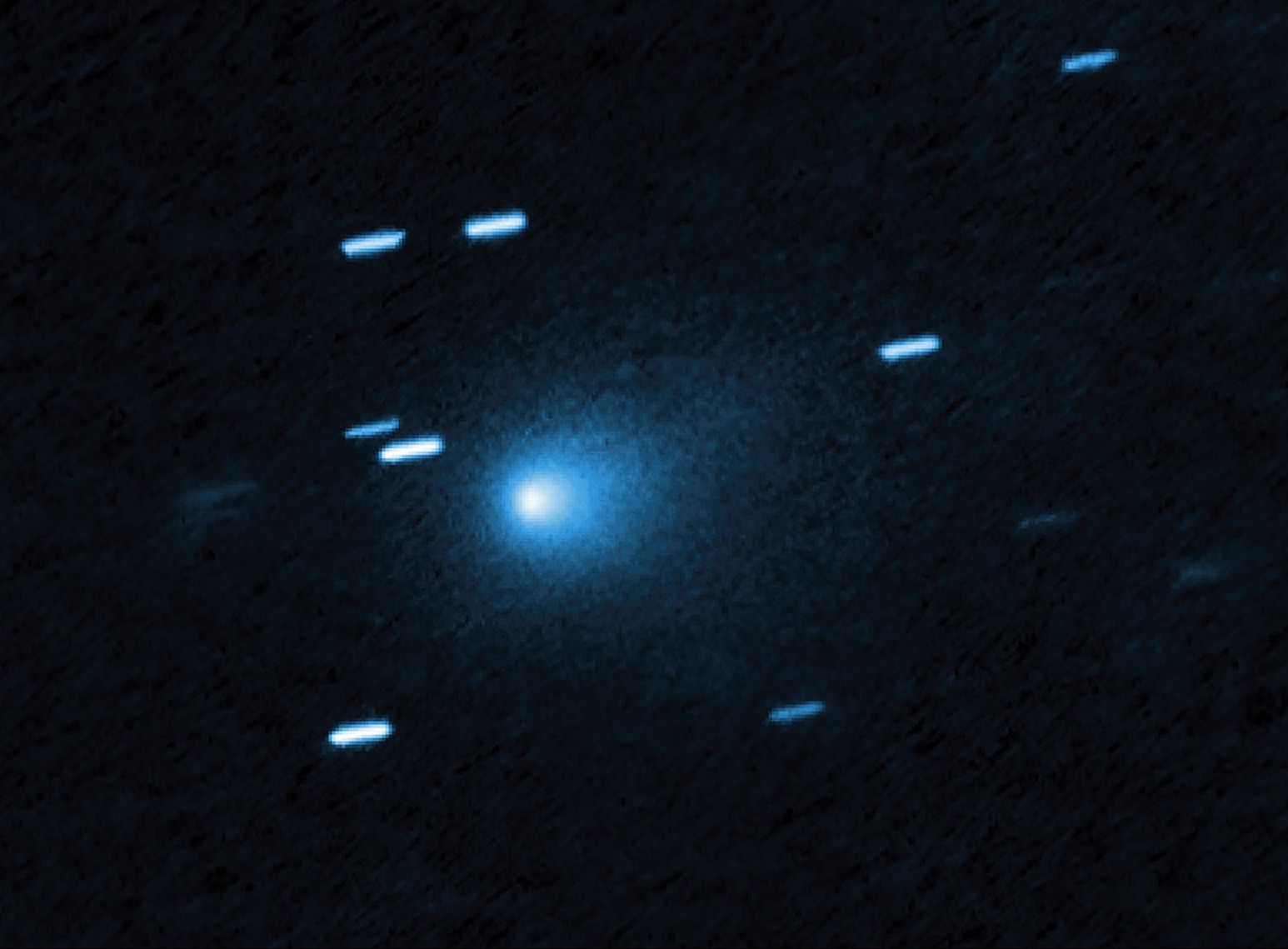 Publicado el: 20/12/20253I/ATLAS: the interstellar comet approaching Earth and what is known about it
Publicado el: 20/12/20253I/ATLAS: the interstellar comet approaching Earth and what is known about it -
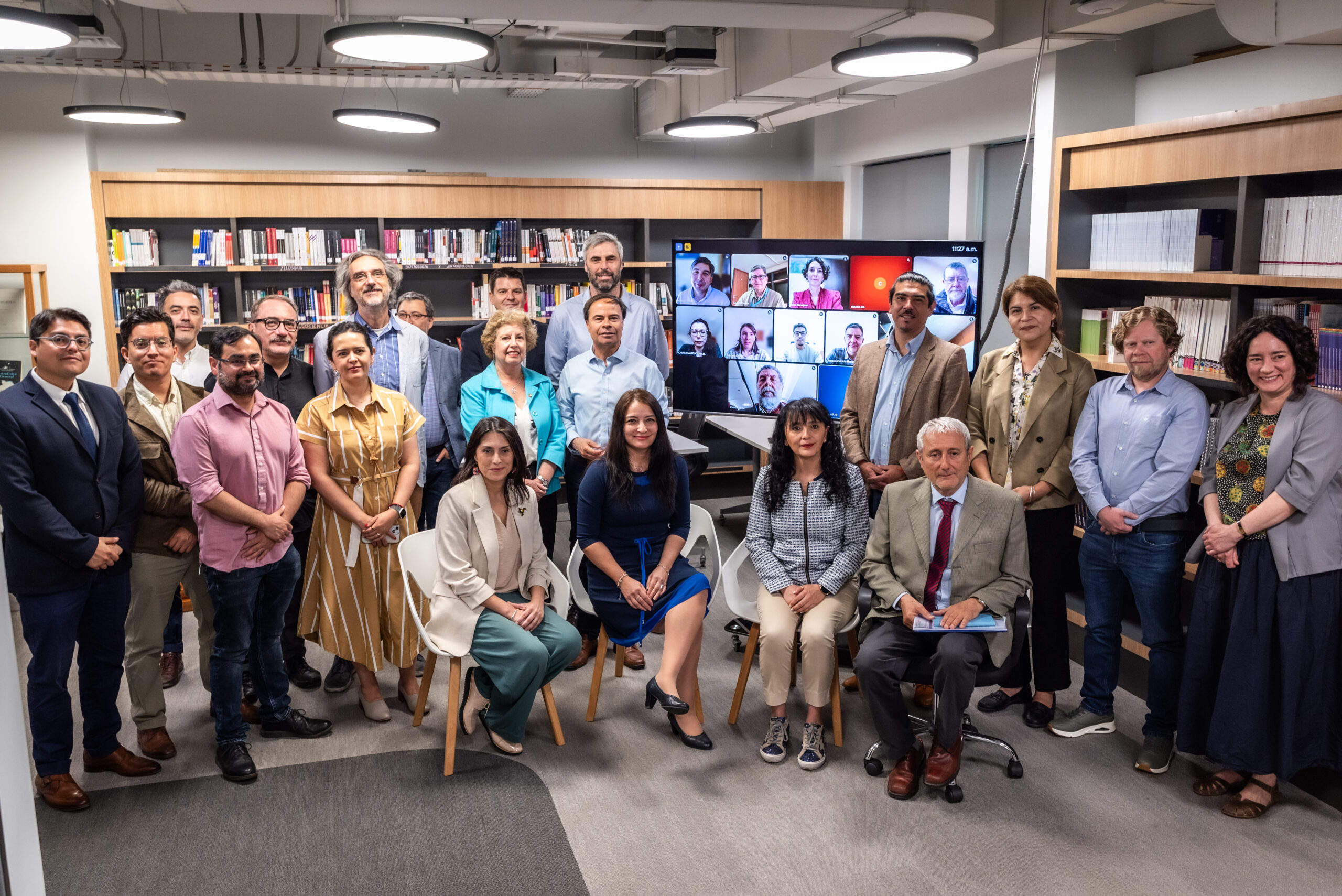 Publicado el: 18/12/2025Ministerial Advisory Committee for Astronomical Observation submits its final report
Publicado el: 18/12/2025Ministerial Advisory Committee for Astronomical Observation submits its final report -
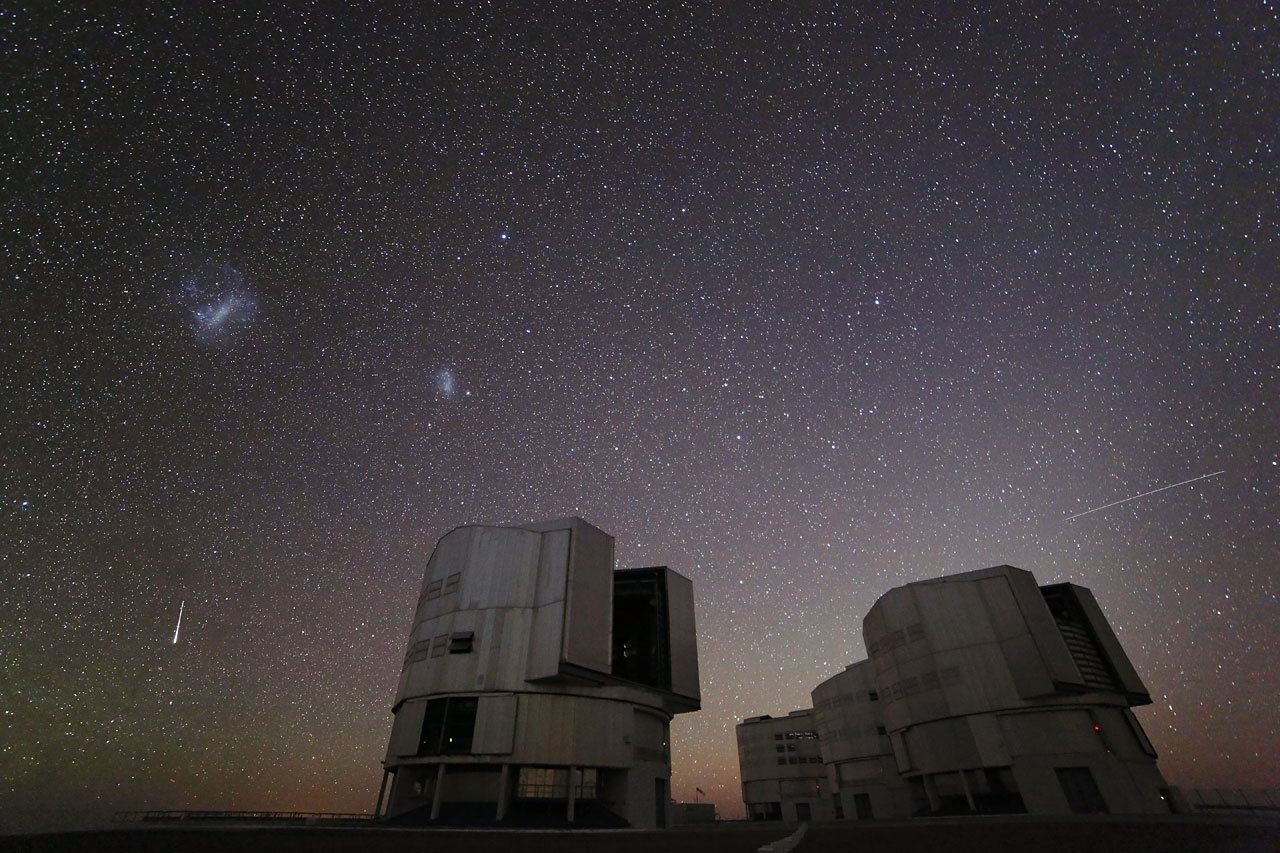 Publicado el: 13/12/2025Geminids 2025: facts and how to observe the last meteor shower of the year
Publicado el: 13/12/2025Geminids 2025: facts and how to observe the last meteor shower of the year -
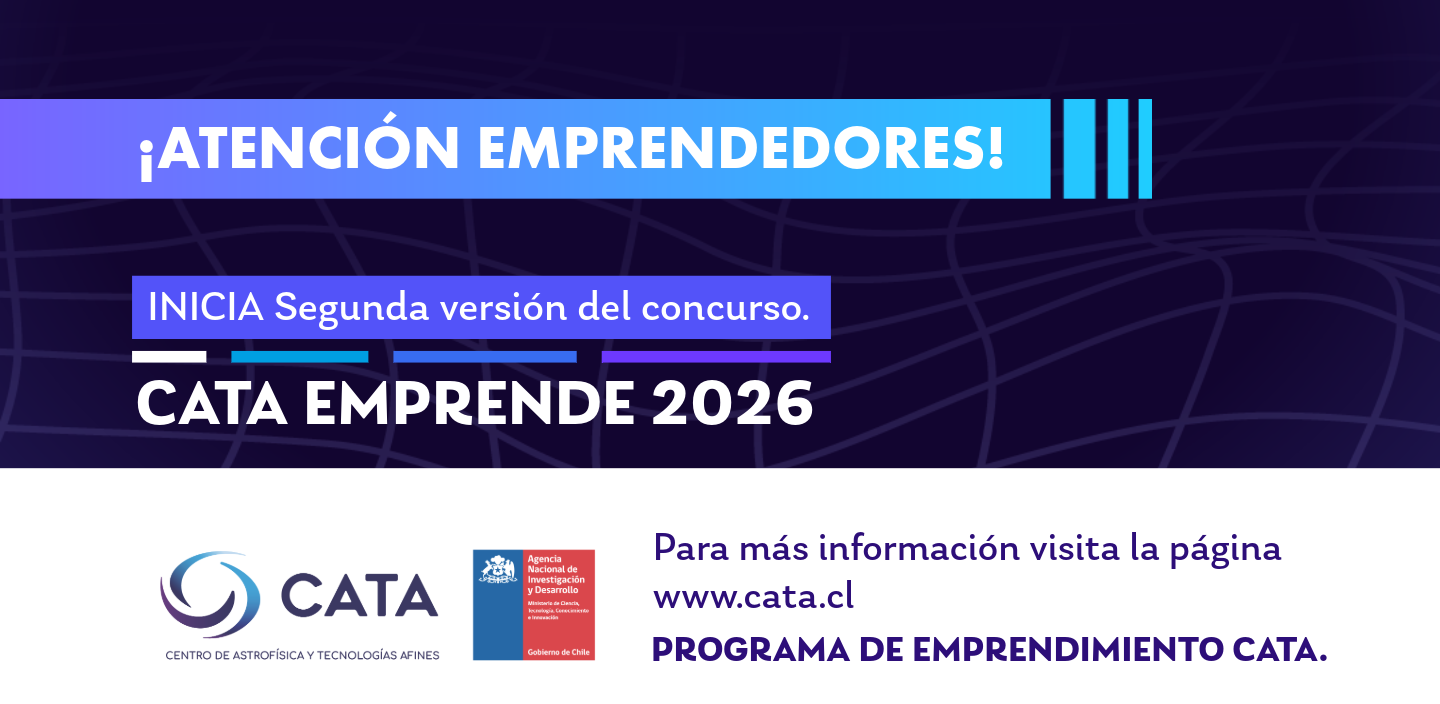 Publicado el: 12/12/2025Call for applications for the CATA Emprende 2026 program now open
Publicado el: 12/12/2025Call for applications for the CATA Emprende 2026 program now open
Categories list
- Acknowledgments 21
- Astrobiology 6
- AstroCluster 1
- Black holes 20
- Corporativo 58
- Cosmology 5
- Descubrimientos 23
- Disclosure 74
- Exoplanets 14
- Extension 7
- Galaxies 22
- Galaxies formation 6
- Inter y Transdisciplina 4
- Local Universe 17
- Publications 6
- Sin categorizar 34
- Solar System 23
- Stellar formation 8
- Technology 16
- Technology Transfer 18
